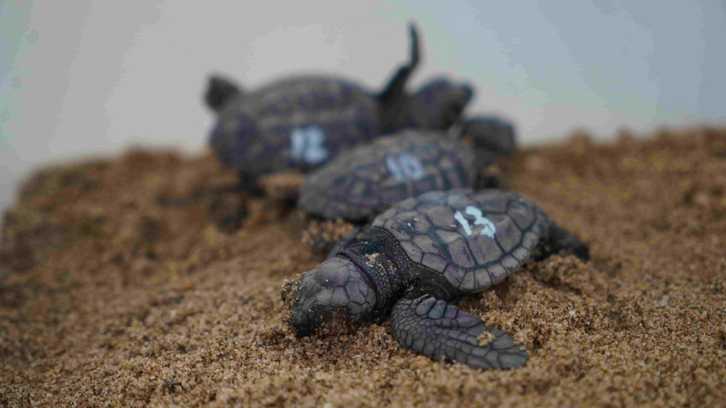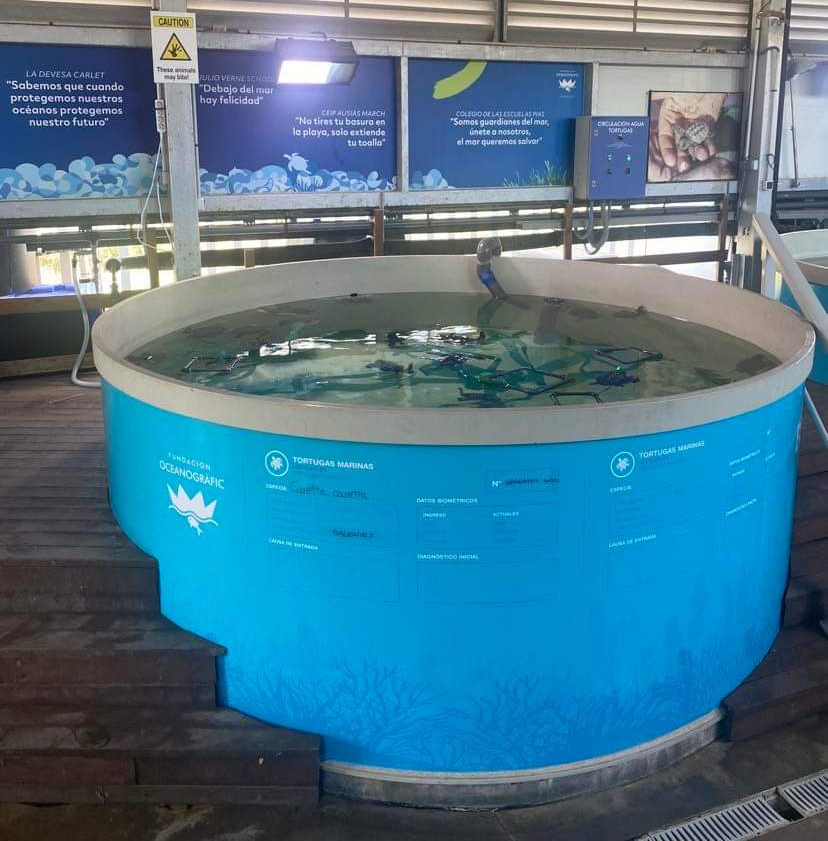Animals & Procedure
This project was done at the Area de Recuperación de Animales del Mar (ARCA del Mar), the rehabilitation facility of the Oceanogràfic of Valencia, Spain. All the sea turtles included in this study were part of a program for sea turtle conservation called ‘Head-Starting‘ (HS), created in order to minimise early-life mortality by collecting eggs in nests and rearing hatchlings in captivity for their first year of life.

Diving behaviour was recorded for a total of 28 loggerhead sea turtles, coming from five different HS programs over three consecutive years. In each group, the individuals recorded were the same throughout the study.

The individuals were housed in a tank at the ARCA del Mar, and each individual was weighed once a week (Body Mass = BM) and marked with a white number on its carapace. The smallest sea turtles were fed by hand three times a day with exact doses to control growth evolution. A barrier could be installed to separate them and allow every individual to have access to food. For older animals, feeding events occurred multiple times a week with a jelly containing vegetables, squid and fish falling directly to the bottom of the tank.

To observe the diving behaviours, a GoPro 7 camera was installed above the tank. During their first months, the sea turtles from Guardamar del Segura were filmed twice a week for 2h. For older individuals from other groups, no specific schedule was established. During the filming periods, one or several feeding occurrences were included in order to capture the diving behaviours of turtles during a feeding event.
Data collection & Analysis
Videos
34 filming sessions were made for a total duration of 64.5 hours. To analyse the video camera footage, a behavioural ethogram was developed.

The videos were analysed with the software BORIS, allowing to have multiple measures for each behaviour:
> mean duration (sec)
> maximum duration (sec)
> total number of occurrences / 2h
> the percentage of each behaviour observed over the time of a video (%)
Lung Volumes
Computed Tomography (CT) scans allowed to have 3D reconstructions of the lungs at different life stages for 7 sea turtles (one individual per stage). The software 3D Slicer was used to segment lungs from CT pictures and quantify the volumes in cm3.
Statistics
Use of RStudio to analyse all the data, to observe differences between the five HS groups and evaluate the intensity of relationships between sea turtles’ BM and the different diving variables.

